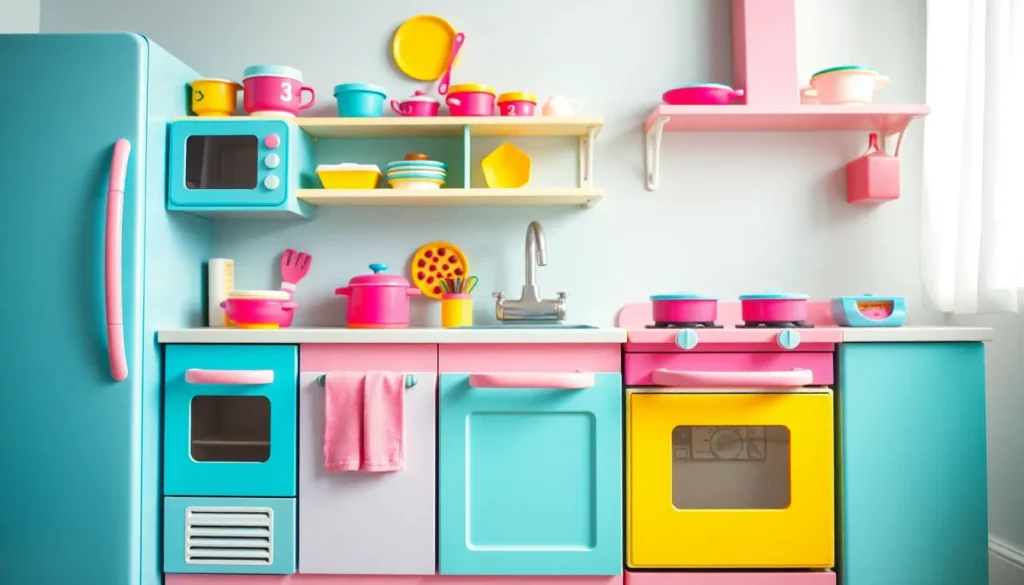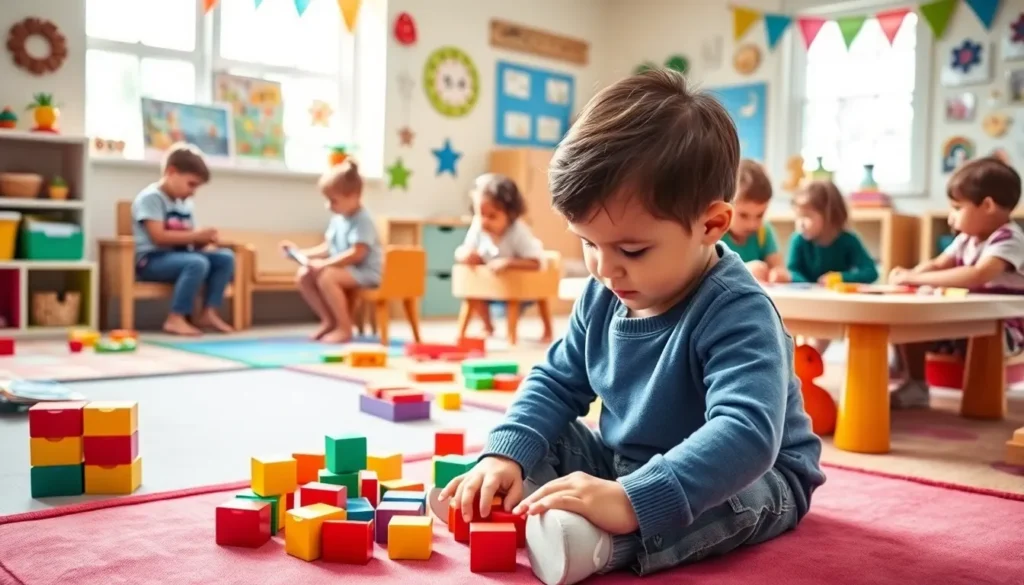Remember those carefree days of the early 2000s when play kitchens ruled the playroom? Those adorable miniature stoves and fridges were more than just toys: they were portals to another world where imaginations ran wild. Whether culinary dreams involved serving a Michelin-star meal or whipping up a plastic birthday cake, these kitchens were the epicenter of creativity. In a time where kids traded smartphones for toy utensils, let’s jump into this cherished childhood gem and explore its delightful legacy.
Table of Contents
ToggleThe Rise of Play Kitchens in the Early 2000s

The early 2000s marked a pivotal moment in the evolution of children’s toys, as play kitchens surged in popularity. As the millennium progressed, parents became more aware of the importance of imaginative play. They sought toys that fostered creativity and social skills, leading to an explosion of miniature kitchen sets that flung open the door to pretend play.
With brands like Fisher-Price and KidKraft leading the charge, these play kitchens featured everything from charming pastel colors to intricate details that mimicked real-life kitchens. It wasn’t just about having a plastic stove: these kitchens included accessories like pots, pans, and even pretend food, enhancing the overall experience. Play kitchens invited children to emulate the adults in their lives, whether through baking cookies or cooking up a feast for their dolls and action figures.
Popular Brands and Models
Several brands emerged as titans in the world of play kitchens during the early 2000s, captivating the hearts of children and parents alike. Fisher-Price offered its iconic “Little People” kitchen, renowned for its durability and bright colors, making it a favorite for toddlers. KidKraft, on the other hand, brought a bit of charm with its wooden kitchen sets, combining a classic look with modern functionality.
One standout model was the KidKraft Deluxe Big & Bright Play Kitchen, featuring realistic appliances that included an oven, microwave, and even a phone. Meanwhile, the Fisher-Price Laugh & Learn Kitchen sparked countless giggles with its interactive features, teaching shapes and numbers through play. These brands didn’t just sell toys: they sold experiences that families could share.
Features That Made Them Special
What set early 2000s play kitchens apart from other toys were the thoughtful features designed to enhance playtime. Many models incorporated interactive elements like lights and sounds. Kids delighted in the oven’s beeps and the sizzling sounds that accompanied their culinary creations. These sensory experiences made playtime even more engaging.
Also, many kitchens came with a plethora of accessories. Sets were stocked with pots, pans, utensils, and pretend food, each piece carefully crafted for smaller hands. Some models even included themed food items, such as pizza slices and cupcakes, which allowed for even more exciting play scenarios. The attention to detail in these features not only encouraged creativity but also sparked conversations and collaborations among young cooks.
The Impact of Early 2000s Play Kitchens on Childhood Development
The influence of play kitchens on childhood development cannot be overstated. Engaging in pretend play allows children to explore various roles and scenarios, which is crucial for developing social skills. As kids interacted with friends while serving up imaginary meals, they learned valuable lessons in cooperation, negotiation, and even empathy.
Cognitive skills were also enhanced through this form of unstructured play. Children practiced counting and sorting with play food, honing their basic math abilities. Language development flourished as they articulated their cooking adventures or role-played conversations at the dinner table. This kind of play is vital: experts argue it provides a foundation for critical thinking and problem-solving skills that benefit children long after their play kitchen is put away.
Iconic Designs and Aesthetic Trends
Design played a crucial role in capturing the attention of young minds in the early 2000s. Play kitchens boasted vibrant colors and playful, visually stimulating layouts. Bright pinks, cheerful yellows, and denim blues were all the rage, making these kitchens visually appealing to children.
Some iconic designs borrowed from popular culture, combining elements from real-life kitchens with a childlike twist. The trend was not just about functionality but also aesthetics, balancing charm and practicality beautifully. Children weren’t just playing, they were immersed in an environment that looked just like their parents’ kitchens, making the experience all the more relatable and exciting.
Collecting and Restoring Vintage Play Kitchens
As nostalgia sweeps over many who grew up in the 2000s, a burgeoning market for collecting vintage play kitchens has flourished. Websites and social media groups are filled with enthusiasts sharing finds and restoration tips for beloved models. Many childhood play kitchens, once cherished, have been lovingly restored and reintroduced into the homes of a new generation.
Collecting vintage kitchen sets isn’t just about ownership: it’s about preserving memories and creating new ones. Restorers often recount how their own children now enjoy the same experiences, connecting them to their childhood in a unique way. The joy derived from revamping these vintage treasures keeps the charm of the early 2000s alive, turning old plastic into timeless memories.




